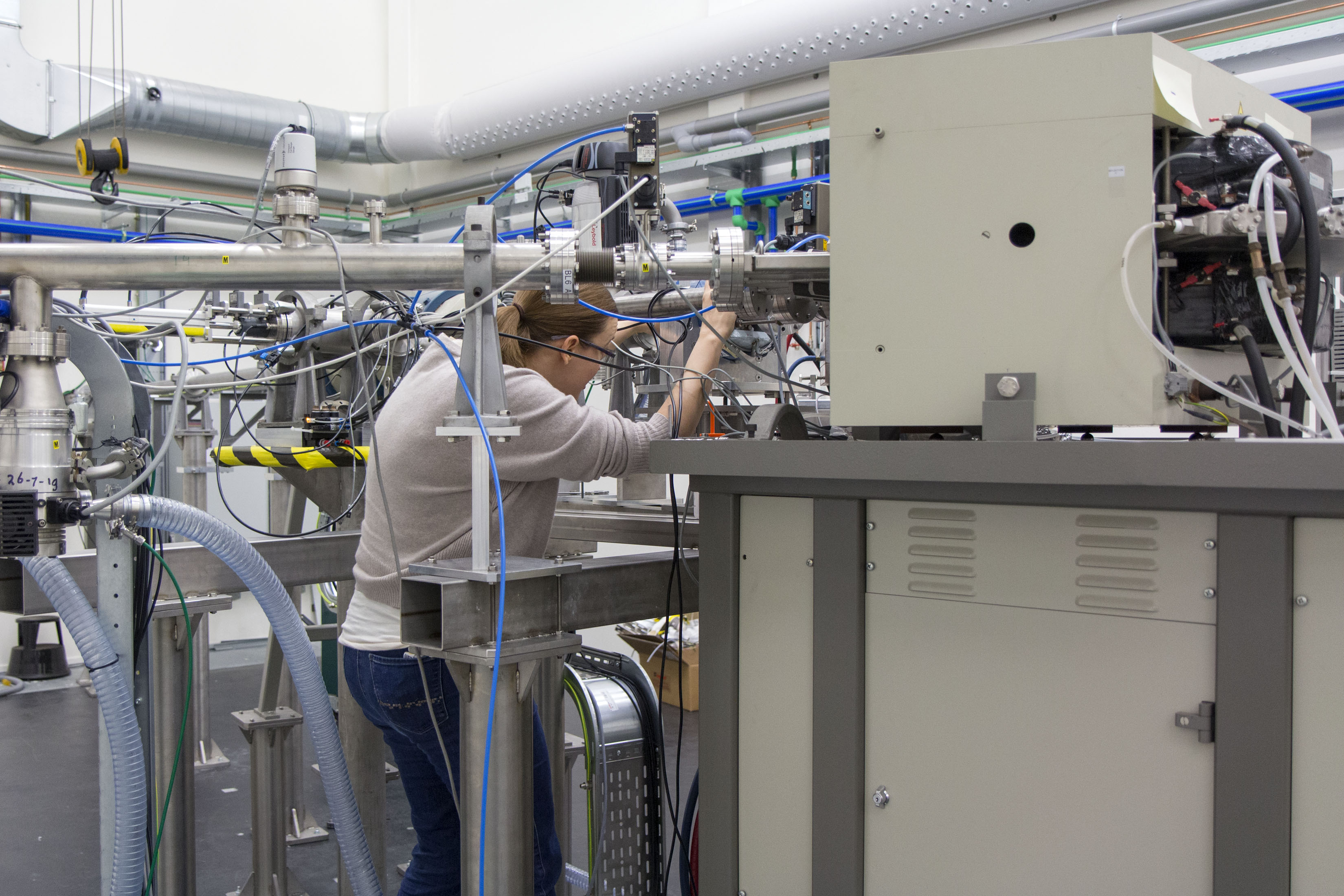Polish-born experimental physicist Beata Tyburska-Pueschel found a close symbiosis between industry and university at the accelerator lab at the University of Wisconsin-Madison. As the new project leader of DIFFER's Ion Beam Facility, she now wants to open up the laboratory to outside users and introduce that same culture of 'giving back'.
Crossing borders to other communities comes naturally to Tyburska-Pueschel, who knew she wanted to become a physicist at 15 years old. "Poland sadly did not have the infrastructure for cutting edge experimental research", she recounts, "so I applied for internships and later a PhD position at the German Institute for Plasma Physics (IPP) near Munich. In the beginning I hardly spoke German or English, but I worked hard. In return I got to learn a lot about ion accelerators."

In the coming years, Tyburska-Pueschel wants to open up DIFFER's ion beam lab to outside users from many fields. "At the moment we already investigate materials properties for our in-house group on fusion wall materials. I also hope to attract our solar fuels researchers for work on catalysts and photovoltaics. But there is so much more you could do: screen art such as paintings for forgeries, or simulate the impact of cosmic rays on delicate electronics in satellites." DIFFER's accelerator is the only facility of its kind in the Netherlands. Tyburska-Pueschel thinks demand will be high. "I plan to set up lectures and expert workshops on what you can do with a facility like this."
Fusion to fission
Tyburska-Pueschel's PhD project used ion beam analysis and ion-irradiation in IPP's accelerator lab to study how tungsten reactor walls get damaged by fast particles that fly out of a fusion plasma. "With our ion accelerator we were one of the first to simulate such damage. A big open question was how much of the fusion fuel gets absorbed into the reactor walls. Everybody had been looking at undamaged tungsten. That has very low solubility, so good news. We showed that damaged tungsten will absorb a lot more of the fusion fuel than the undamaged metal."
A post-doc followed at the University of Wisconsin-Madison, and crossing borders paid off once more: "In Wisconsin I worked on neutron-damaged materials again, but this time in the context of fission power plants. I discovered that the fission people had been studying neutron damage for decades already; somehow fusion had not imported that knowledge yet. I'm lucky to have seen both fields so I can share that knowledge. It's key to connect to other fields and discover what they have to offer."
Five years in the USA offered Tyburska-Pueschel the opportunity to experience a different science culture than that in Europe. As manager of the local accelerator lab, the physicist was struck by the close relation with nearby accelerator manufacturer NEC: "Americans call it 'giving back'. We trained their future employees, they provided free repairs, we allowed them to test new techniques at our facility. I hadn't seen that level of symbiosis in Europe." At DIFFER, Beata wants to build up the same close relationship with HVE, the Dutch manufacturer of the institute's own ion beam accelerator.
Upgrades
There's work to be done first, as the experimentalist discovered in her first working weeks: "Frankly, this was the least modern accelerator lab I've ever seen! Everything worked, but all the systems and controls were spread over different rooms. All those stairs - I never walked so much. At the same time I see a lot of potential. Before we open for outside users I want to upgrade our systems. We'll be able to run all the controls from one control room, automate the safeties, pull in measurements to one central storage system, and so on. It'll take some effort, but then we will be able to do exciting research here."

More information
DIFFER's Ion Beam Facility
News item (2016): Ion Beam Facility is getting into shape
Go to the News page.